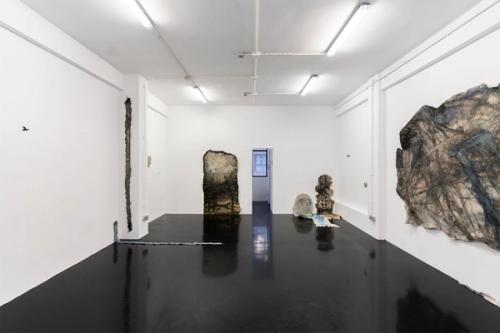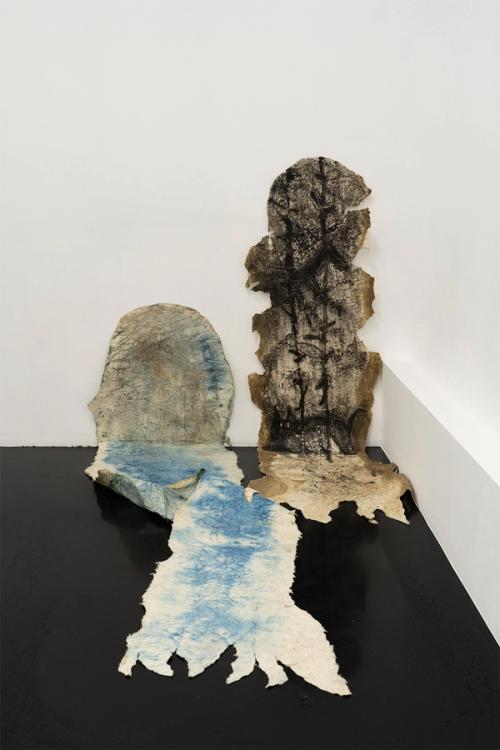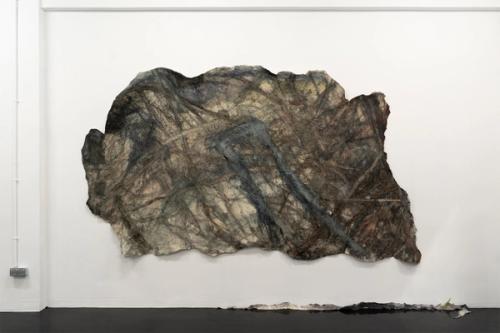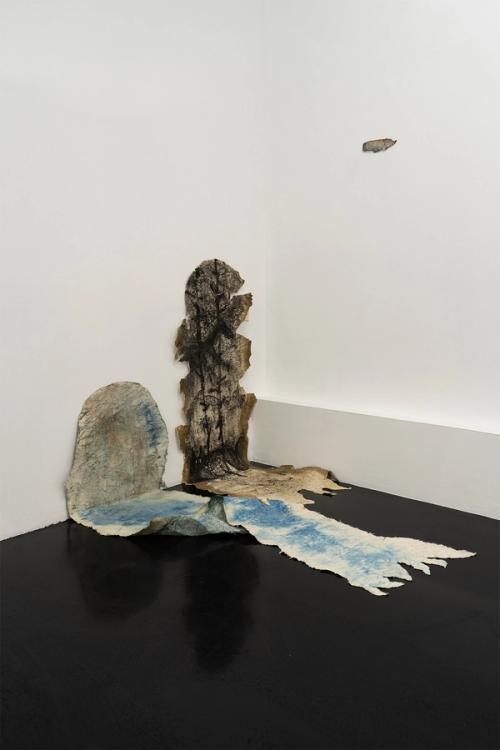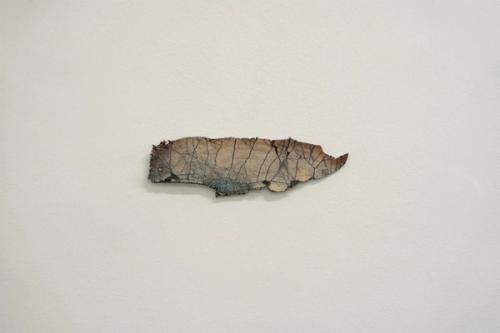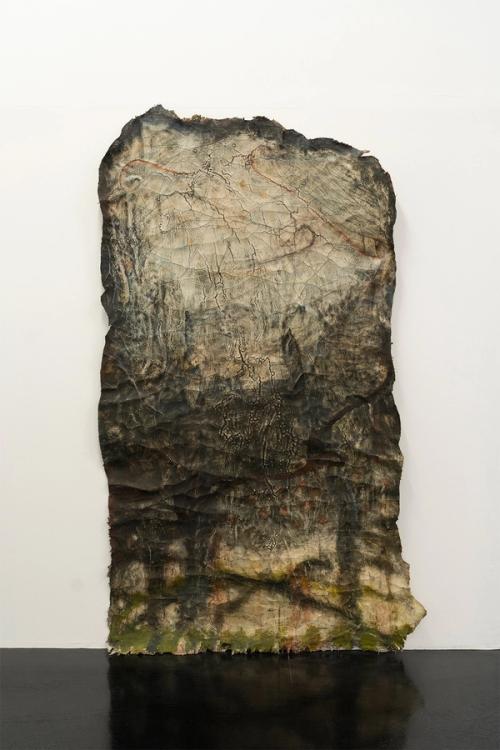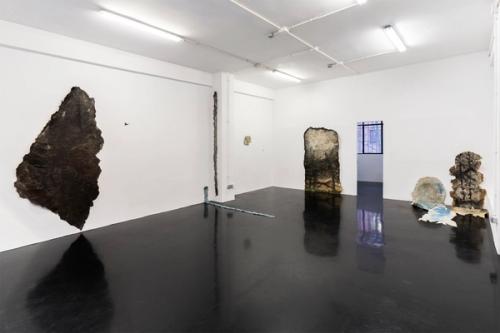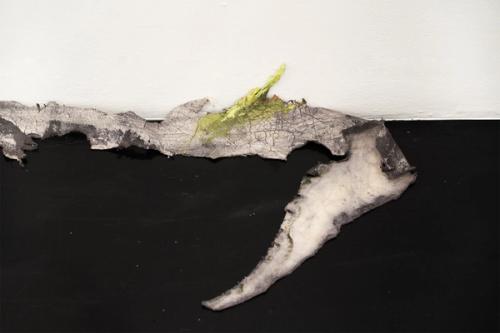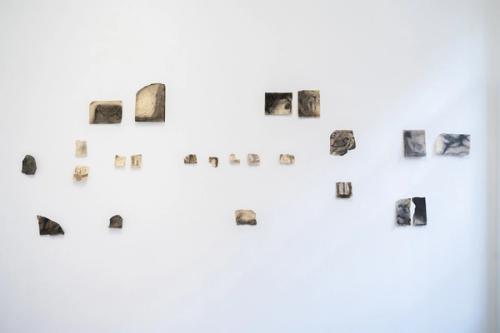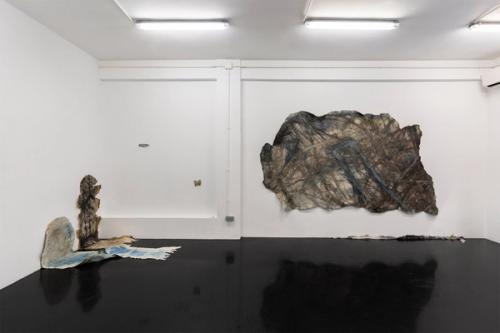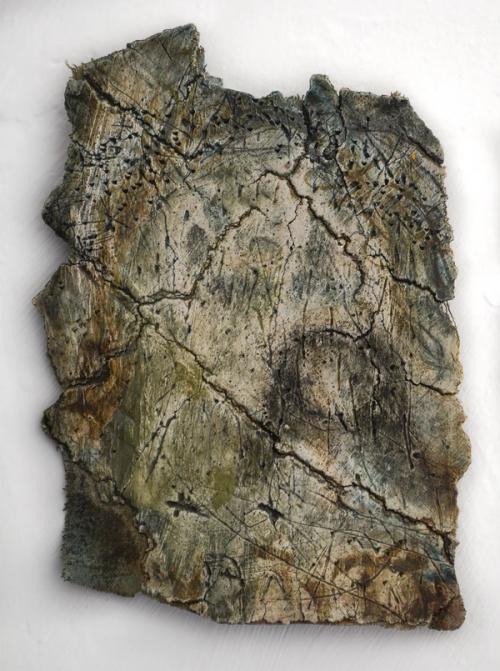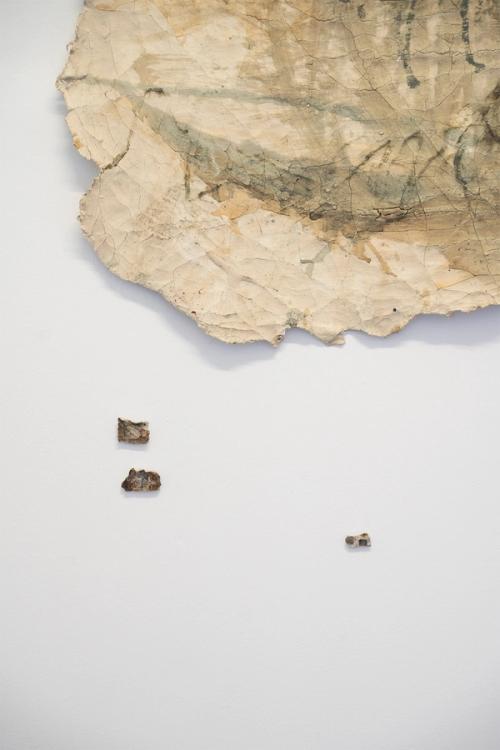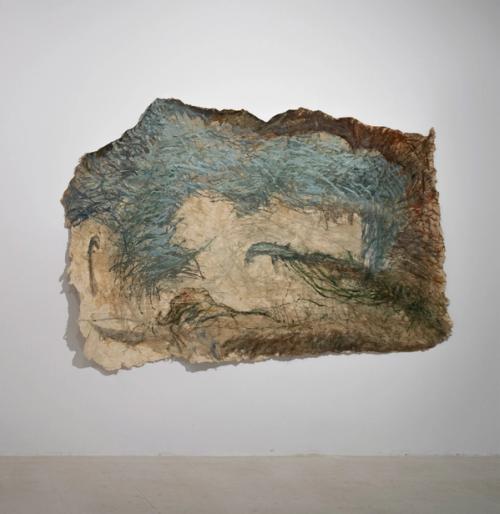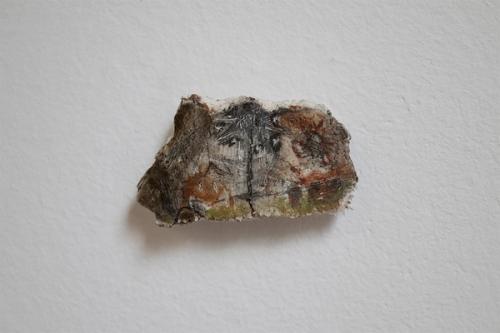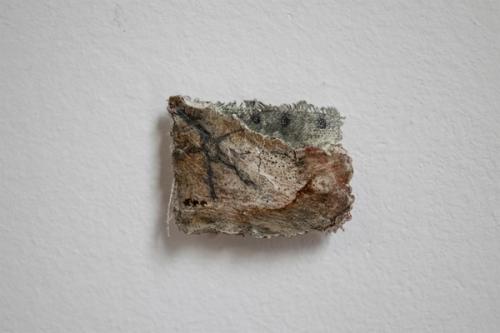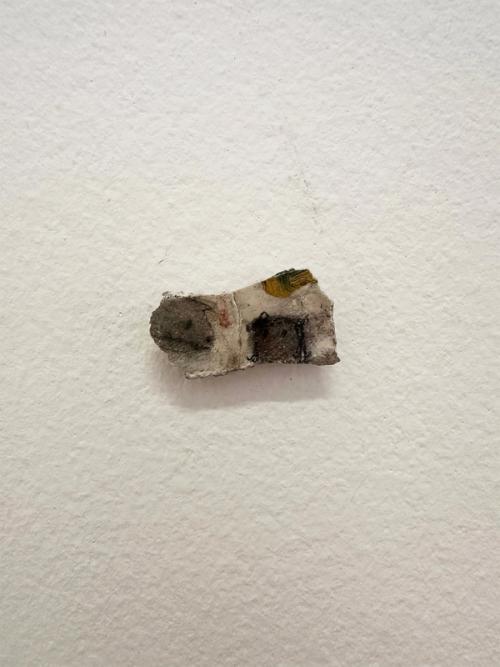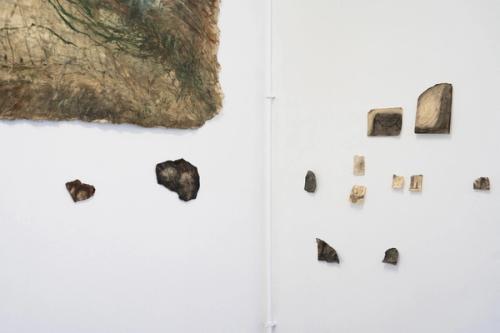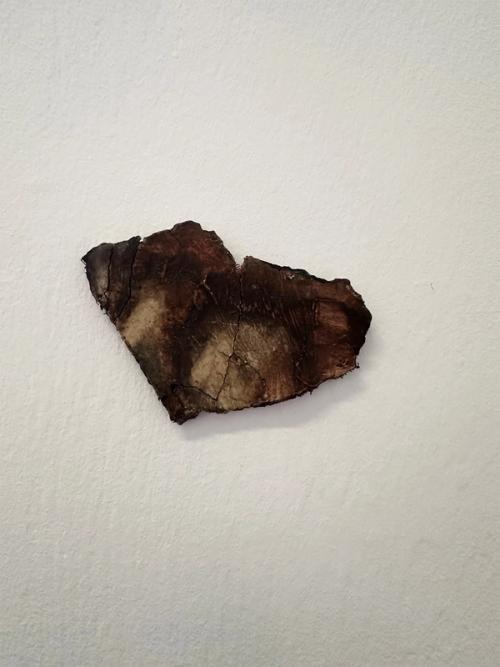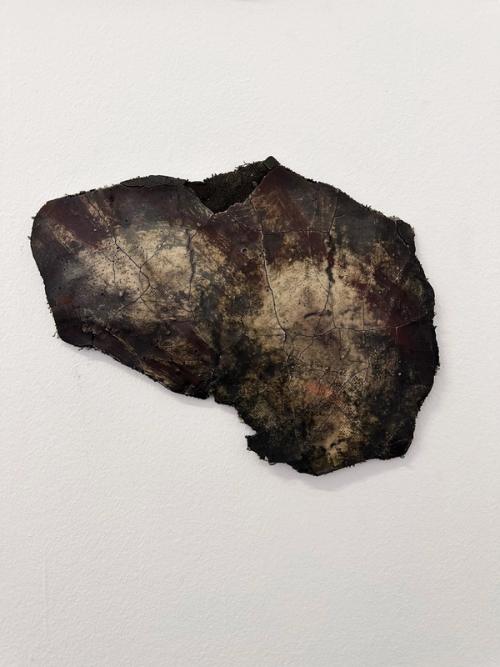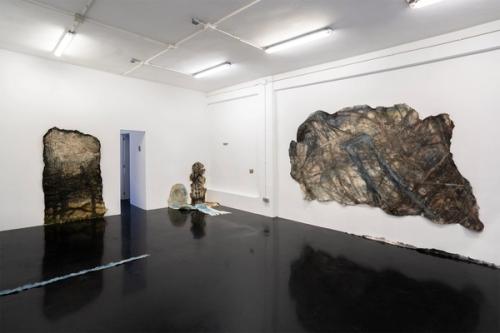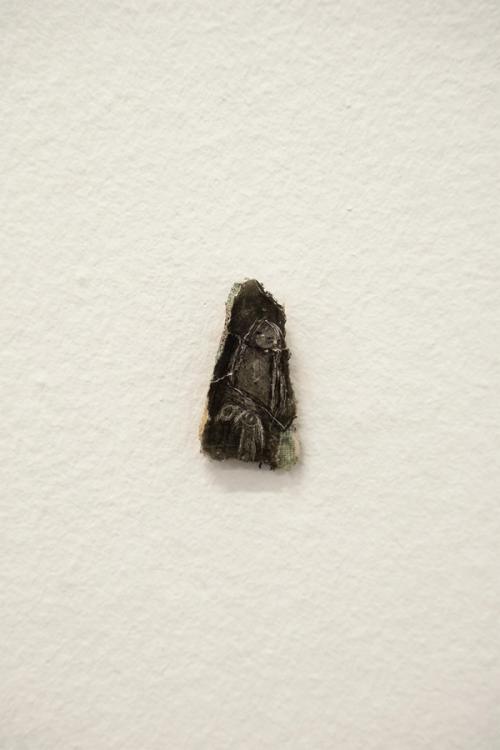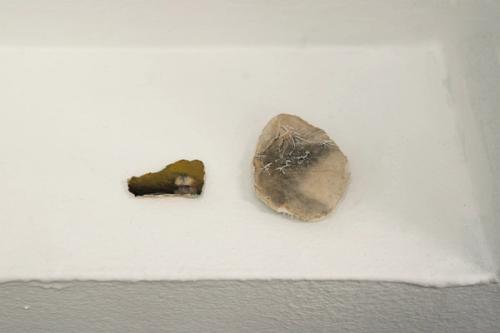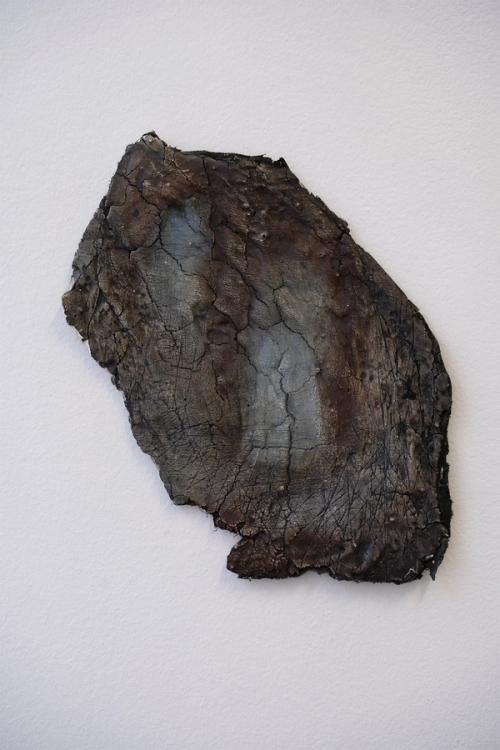La boca del animal en la boca
Solo show by Jose Casas
La boca del animal en la boca
Solo show by Jose Casas
10 January - 21 February 2025
Credits
Goro Studio
DOSSIER
DownloadThe work of Jose Casas (Girona, 1995) explores a reconfiguration of the basic elements of painting (canvas, primer and pictorial material) in relation to space, bringing scene and scenography into play. These works are made from the perspective of atavistic time and the space of the fragment, understood as present states that allude to concepts of memory, imagination and symbol.
They contain processual elements that point to a consciousness where the devastated is also a creative element. The work is treated by means of a constant making, unmaking and remaking, under manual activities of creation and suppression, waiting for the pictorial image to emerge under a notion of discovery.
This generates a physical-psychic search made explicit in the work itself, a cathartic state, where the wounded is also configured as a healing element.
*
“My practice unfolds in a constant activity of making-unmaking-making. I start from the reciprocal relationship between what is destroyed and what is built. I assimilate loss and encounter as an essential part of the processes. The fragmented, the superimposed, or the accidental allow me to attend to resignifications that diverge in new directions.
Childhood, death, the animal, or fantasy are recurring themes in my work. Egyptian hieroglyphics, Renaissance emblems, Czech New Wave cinema, Aztec funerary statuary, and animated series from my childhood are part of a varied imaginary that I take as a reference. It is also influenced by the observation of everyday elements such as forms of expansion and convergence, cracks and hollows, or the doors of collapsed or boarded-up houses.
The emotional direction I am heading in is concrete, the atmosphere of the landscape I am entering, but there is no goal, no point to rest on. It is an arrow without a target. Thus generating a language that points to something concrete and diffuse at the same time. It is this search for a precise impossibility of speech that gives rise to an underlying communication.”
*
Beyond a curatorial and/or conceptual explanation of Jose’s work, we ask you to experience it from a sensorial point of view giving way to the sentimental. To speak of feelings in relation to a body of work (or an entire practice) is almost anachronistic nowadays, it seems as if there is no longer any place for such a connection between art and the spectator. The peculiarity (this word is perhaps an understatement) of the works in this exhibition and in general of Jose’s work, can be understood from a linguistic level, from the concept and even from the academic, but we believe that these positions in front of works like these are even forced, because the painting we see has a direct entrance to mystery, they force us to approach them to try and understand what it is we are seeing, in an almost boastful way they incite us to touch them, it is as if the work itself knows that its understanding will not come from the mental, but from somewhere else.
What do we see? It is likely that our imagination takes us to disparate places to apprehend what we see before us. It is the pavement that cracks with the passage of time and people; it is a toy that remains inscribed in a tiny nook of our memory; it is a memory we did not have of an ancient cave; it is a piece of wall that we look at every time we want to find a familiar face before falling asleep; it is the skin of an animal that causes us tenderness and terror at the same time. It is a painting, isn’t it?
We could also explain the process of the work, investigate how and how long it takes the artist to come up with these trompe l’oeil tricks of everything and nothingness, but once again, we consider that painting –especially this painting– today has to be a loophole beyond the reach of the mathematical and exact; we cannot write an incomprehensible text full of references for a work that we ourselves cannot understand, but we feel it more deeply than any other.
They contain processual elements that point to a consciousness where the devastated is also a creative element. The work is treated by means of a constant making, unmaking and remaking, under manual activities of creation and suppression, waiting for the pictorial image to emerge under a notion of discovery.
This generates a physical-psychic search made explicit in the work itself, a cathartic state, where the wounded is also configured as a healing element.
*
“My practice unfolds in a constant activity of making-unmaking-making. I start from the reciprocal relationship between what is destroyed and what is built. I assimilate loss and encounter as an essential part of the processes. The fragmented, the superimposed, or the accidental allow me to attend to resignifications that diverge in new directions.
Childhood, death, the animal, or fantasy are recurring themes in my work. Egyptian hieroglyphics, Renaissance emblems, Czech New Wave cinema, Aztec funerary statuary, and animated series from my childhood are part of a varied imaginary that I take as a reference. It is also influenced by the observation of everyday elements such as forms of expansion and convergence, cracks and hollows, or the doors of collapsed or boarded-up houses.
The emotional direction I am heading in is concrete, the atmosphere of the landscape I am entering, but there is no goal, no point to rest on. It is an arrow without a target. Thus generating a language that points to something concrete and diffuse at the same time. It is this search for a precise impossibility of speech that gives rise to an underlying communication.”
*
Beyond a curatorial and/or conceptual explanation of Jose’s work, we ask you to experience it from a sensorial point of view giving way to the sentimental. To speak of feelings in relation to a body of work (or an entire practice) is almost anachronistic nowadays, it seems as if there is no longer any place for such a connection between art and the spectator. The peculiarity (this word is perhaps an understatement) of the works in this exhibition and in general of Jose’s work, can be understood from a linguistic level, from the concept and even from the academic, but we believe that these positions in front of works like these are even forced, because the painting we see has a direct entrance to mystery, they force us to approach them to try and understand what it is we are seeing, in an almost boastful way they incite us to touch them, it is as if the work itself knows that its understanding will not come from the mental, but from somewhere else.
What do we see? It is likely that our imagination takes us to disparate places to apprehend what we see before us. It is the pavement that cracks with the passage of time and people; it is a toy that remains inscribed in a tiny nook of our memory; it is a memory we did not have of an ancient cave; it is a piece of wall that we look at every time we want to find a familiar face before falling asleep; it is the skin of an animal that causes us tenderness and terror at the same time. It is a painting, isn’t it?
We could also explain the process of the work, investigate how and how long it takes the artist to come up with these trompe l’oeil tricks of everything and nothingness, but once again, we consider that painting –especially this painting– today has to be a loophole beyond the reach of the mathematical and exact; we cannot write an incomprehensible text full of references for a work that we ourselves cannot understand, but we feel it more deeply than any other.
